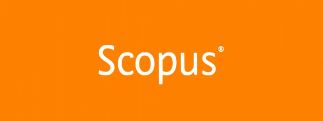Gender normative and non-normative morphemes usages study: preference, tolerance and refuse on autoidentification
Abstract
This study focuses on the use of a sociopragmatic methodology to research morphological phenomena. In particular, the study starts from the verification of new non-normative gender morphemes uses to make visible a part of the society that, according to the criticism of feminist linguistics to its normative usages, excludes them in its representation. So, the starting point of this study is to consider an associated perception of two phenomena: grammatical gender and (sociocultural) gender. This premise is treated as a sociocultural conditioning that enables the implementation of sociopragmatic research tools. The designed tool has enabled to determinate, on a scale of degrees, the preference, tolerance and refusal to these new gender morpheme uses in a given population segment, supporting the validity of sociopragmatic tools to study morphological phenomena.
Downloads
References
Acosta Matos, M. M. (2016). Subversiones lingüísticas del español: @, x, e como morfemas de género inclusivo y otros recursos estilísticos en publicaciones anarquistas contemporáneas. Ensayo para Tesis. Máster de Arte en Español. Departamento de Lenguas y Literaturas Extranjeras. CUNY University Works: New York.
Álvarez de Miranda, P. (2018). El género y la lengua. Madrid: Turner.
Amezúa, E. (1999). Teoría de los sexos: la letra pequeña de la sexología. Revista española de sexología, pp.95-96.
- Bengoechea Bartolomé, M. (2015). Género y lenguaje. Madrid: Síntesis.
Bosque, I. (2012). Sexismo lingüístico y visibilidad de la mujer, Informe de la Real Academia Española.
Calero Fernández, M. A. (2006). Homosexualidad y heterosexualidad en los diccionarios: ¿tabú lingüístico o cuestión de género?. En Vigara Tauste, A. M. (Ed.), “Género”, sexo, discurso. Madrid: Ediciones del Laberinto.
Corbett, G. (1991). Gender, Cambridge textbooks in linguistics. Cambridge: Cambridge University Press.
Corbett, G. (2013). Number of Genders. En Dryer, M. et al. (Eds.), The World Atlas of Language Structures Online. Leipzig: Max Planck Institute for Evolutionary Anthropology. Recuperado de http://wals.info/chapter/30
Davies, S. G. (2007). Challenging Gender Norms: Five Genders among Bugis in Indonesia. Boston: Thompson Wadsworth..
González Calvo, J.M. (1979), El género ¿una categoría morfológica?, Anuario de Estudios Filológicos, 2.
Gravius, B. (imp.) (1559). Gramatica de la lengua vulgar de España. Lovaina.
Lara Icaza, G. (2014). Proposición X, Género y sexo en el lenguaje escrito. Trabajo de Fin de Máster. Universidad Complutense de Madrid.
Lemus, J. E. (2001). Sexismo en el lenguaje: mitos y realidades, Memorias del Encuentro de la Red Centroamericana de Antropología. San Salvador: Asociación Salvadoreña de Antropología.
López Serena, A. (2011). Usos lingüísticos sexistas y medios de comunicación. En torno al denostado masculino genérico. En Mancinas-Chávez, R. (coord.), Las mujeres en el espejo mediático, II, Jornadas Universitarias: Sexo, género y comunicación.
Nebrija, A. (1492). Gramática castellana. Salamanca.
RAE (1920) Gramática castellana. Madrid: Espasa-Calpe.
RAE (1771). Gramática de la lengua castellana. Madrid: Espasa-Calpe.
RAE (2009). Nueva Gramática de la Lengua Española. Madrid: Espasa-Calpe.
RAE (2018). Diccionario Panhispánico de Dudas. Madrid: Espasa-Calpe.
Roca, Ignacio M. (2013). El género del castellano: entelequias y realidades. Español actual: Revista de español vivo, volumen (99), pp. 51-95.
Rodríguez Iglesias, A. (2019). La percepción de la asociación entre género gramatical y género sociocultural en adolescentes españoles. (Trabajo de Fin de Máster). Universidad de Sevilla.
Sarmiento Salinas, M. Á. (2015). La e para la desexualización del género en beneficio de la motivación de ELE en Suecia. Revitalizando la propuesta de Álvaro García Meseguer. En Morimoto, Y. et al. (Eds.). La enseñanza de ELE centrada en el alumno. XXV Congreso Internacional ASELE.
Violi, P. (1991). El infinito singular. Madrid: Cátedra.
Zaranka, J. (1984). Protágoras, precursor de la gramática griega, Forma y Función, 2. Bogotá: Universidad Nacional de Colombia.

Copyright (c) 2018 Adrián Rodríguez Iglesias

This work is licensed under a Creative Commons Attribution 4.0 International License.
Texts in Process (TEP) is a non-commercial open-access scholarly journal governed by a Creative Commons Recognition 4.0 International license. It follows a full and unrestricted open access, without charges or fees for shipping, reviewing, processing and publishing articles. Users can read, download without registering, distribute, print or link the complete texts of numbers and articles, without the permission of the editors or authors. There is also no charge to publish (APCs), being applicable to the entire editorial process. The authors retain their intellectual rights at all times.
ASICE-EDICE Programme has always believed that non-commercial, open, unlimited and unrestricted access to specialized academic publications is a vehicle for academic freedom and scientific rigor. It adheres and shares the Declaration of Mexico and DORA to guarantee the protection of academic and scientific production in Open Access.
















